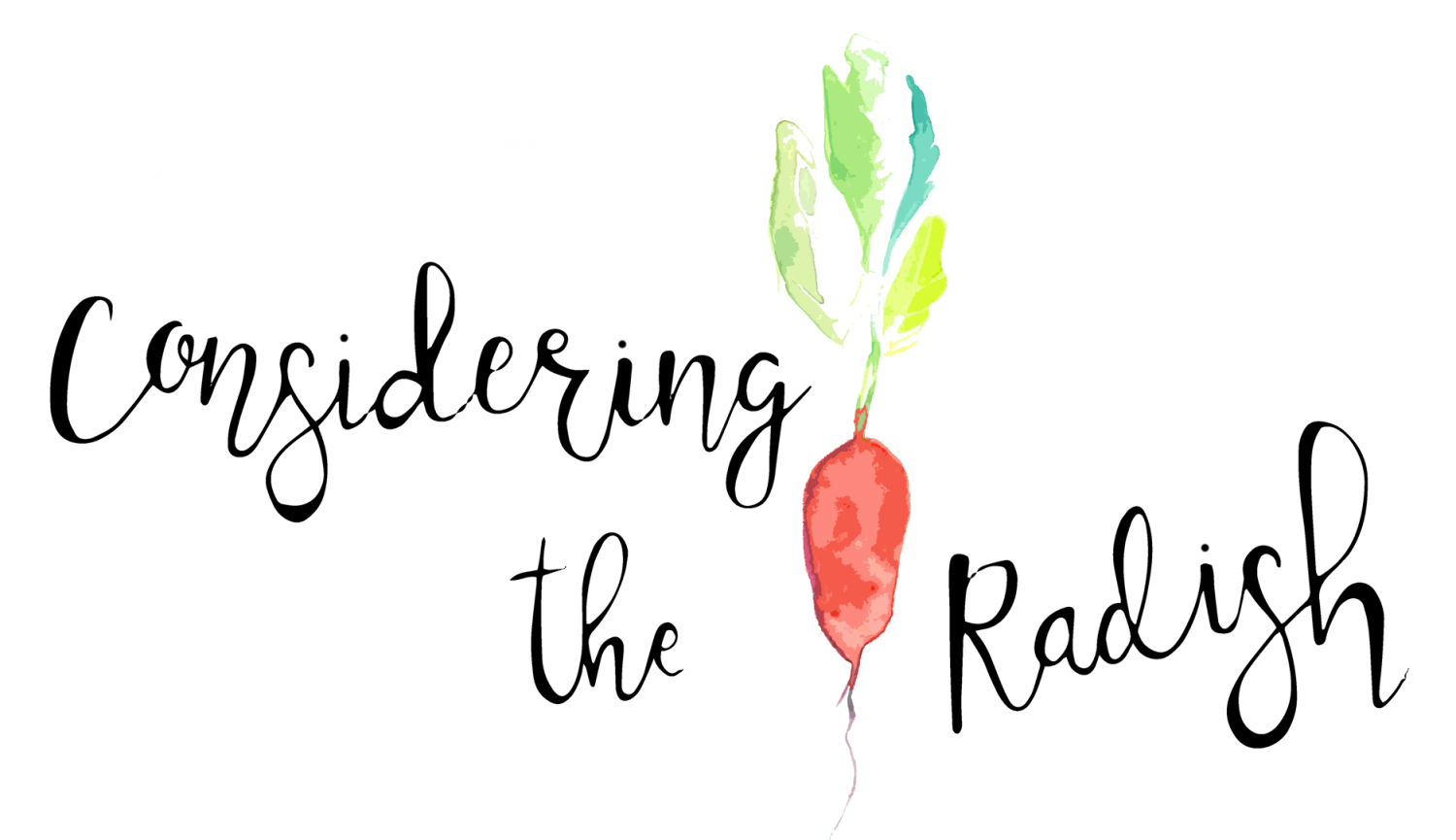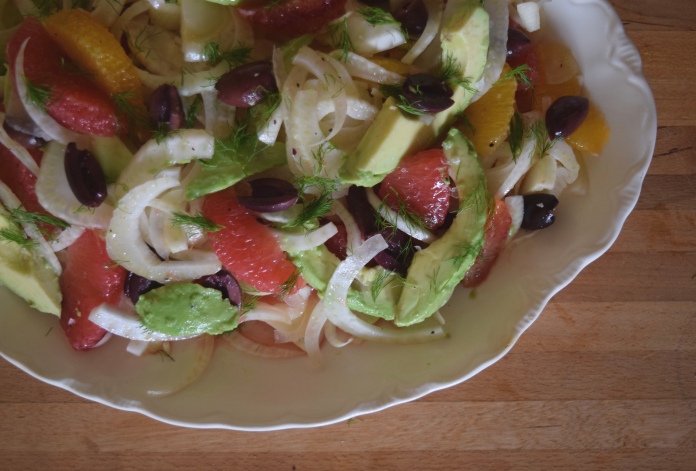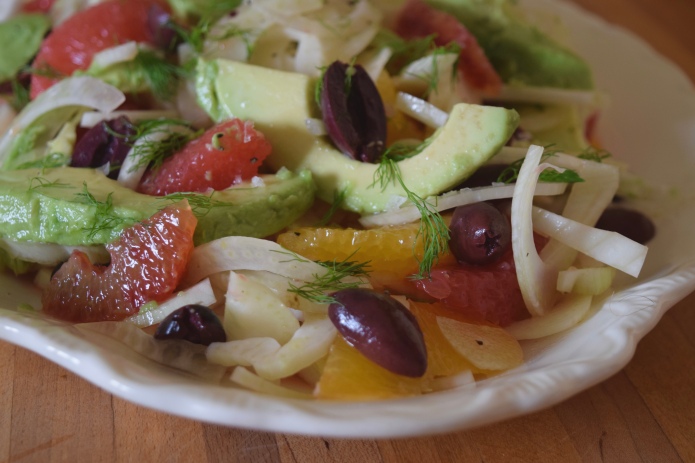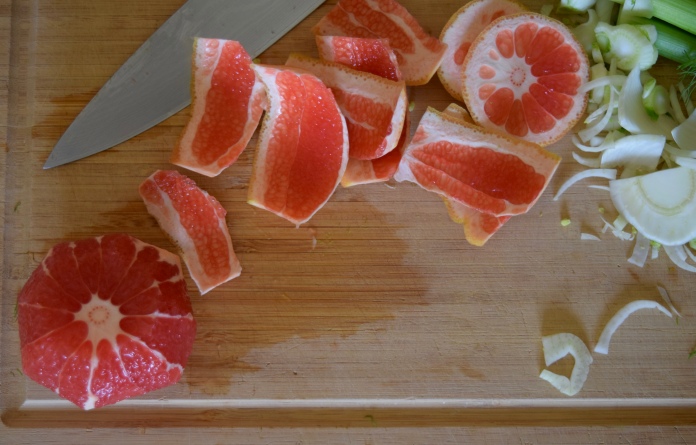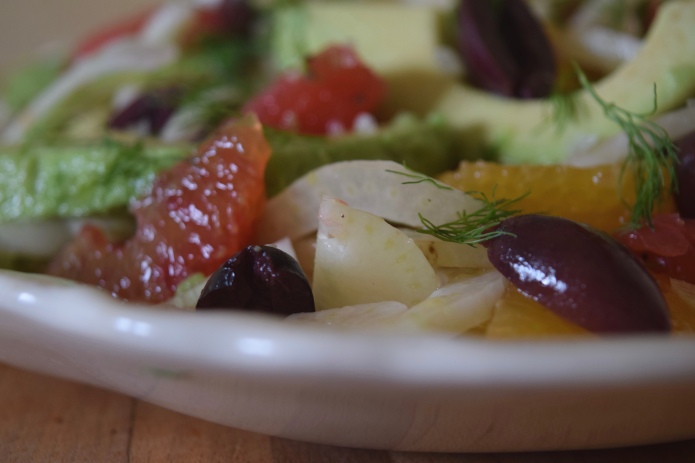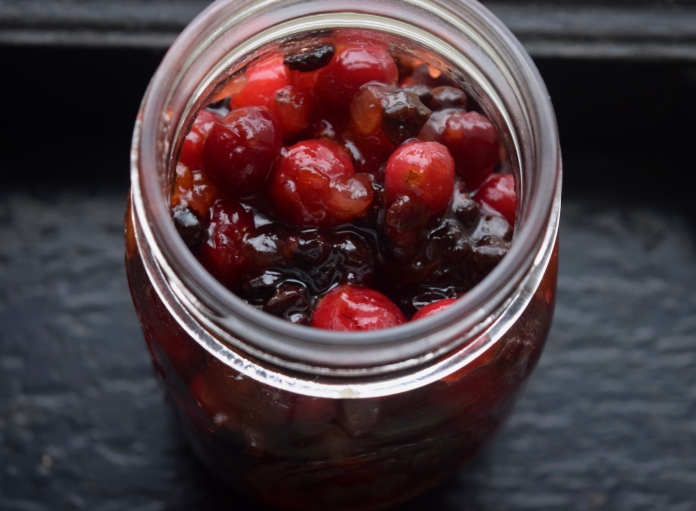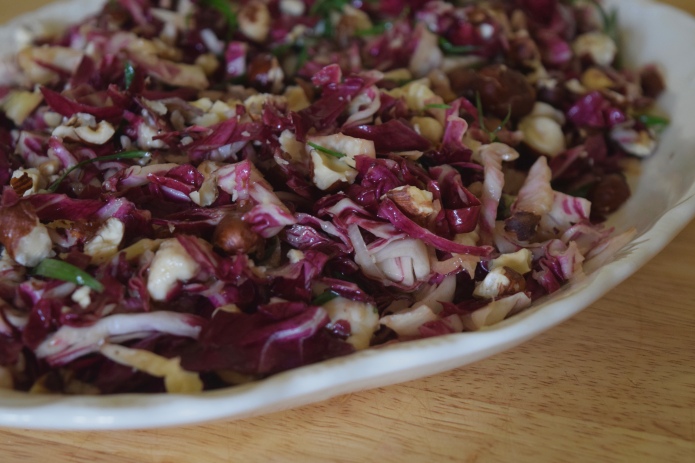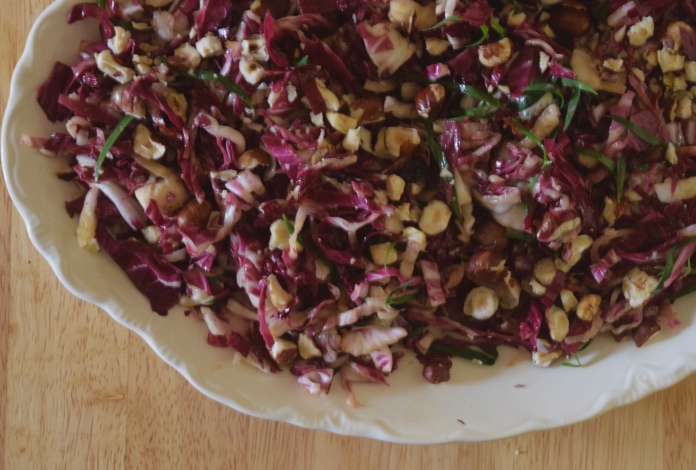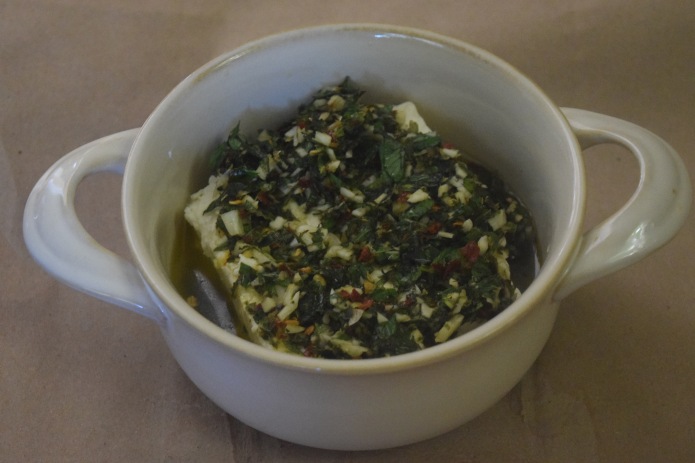
Hi! It’s good to be back.
I wasn’t planning on being gone for so long, but the combination of celebrating Christmas/ being with my family/ having 5 consecutive days off/ turning 27 made me reluctant to open my computer. This past week has been packed full of good things, from a 2 hour game of Clue with my family to late night drinks with friends to finally finishing the book I was reading. I hope that whatever you celebrate, your week has been similarly refreshing.
Two weeks ago I wrote about our date nights. Last week, right before my family came into town, I made a version of this salad for a light, pre-holiday date night dinner. And now I’m here to share it with you. The inspiration for this recipe came from The A.O.C. Cookbook by Suzanne Goin, an inspiration of a chef and owner of one of the restaurants I most fantasize about visiting.
But something happened when I was making this salad- I was reminded of work.
Last year there was a meat pie on my station. It was a relatively straightforward dish- meat, potatoes, gravy, pastry. And making everything from scratch was a 4 day process. Even if the recipe was mine to share, I would only share it with the most ambitious of home cooks. And then only with plenty of caveats. A lot of restaurant recipes are like that. Your eye is towards consistency of result. You’re making a huge amount of food. You’re not shying away from sub recipes. And you’re relying on the person who is making the recipe to know how to adjust it. That makes following any recipe from a restaurant a slightly fraught proposition. My first few weeks cooking at a restaurant I couldn’t stop asking the most annoying questions- I didn’t understand how restaurant recipes differed from the ones I was used to following.
Aaron and I devoured the salad. It was delicious- hippie chic, if you will. And it’s lovely in an earthy way- blacks and browns and greens. But as tasty as it was, I still had some qualms. There were some steps that made little sense. Goin had you reduce balsamic vinegar by half before you added it to the salad, making it thicker and sweeter, but it was so sweet that I spiked the salad with additional vinegar before serving. Farro and forbidden rice were paired together, and they were delicious, but they were cooked separately with almost the exact same ingredients and very similar cooking times. And despite the gorgeous ingredients- sweet, plump currants, toasted pine nuts, peppery mustard greens, gently cooked onions- the salad tasted little flat. If I had been at work, I would have added more salt, but I was wondering if there was another way to bring that spark in.
While eating it Aaron and I started to make notes on how we would change it. It became pretty clear quite quickly that those changes might make it easier. It might be suitable for the home cook who doesn’t possess an infinite amount of pans, a walk-in full of fresh herbs, and an employee whose job is to wash dishes. I swapped the forbidden rice, which can be difficult to find, in for lentils, which also make the salad more filling. I added capers to the relish. Lentils and farro were cooked in the same pot, with the same aromatics. Sweet balsamic vinegar was changed out for slightly less sweet sherry vinegar. The tartness could sing, and finally the sweetness came from the currants and onions alone. Capers rounded everything out. Mustard greens provided a sharp relief. Aaron told me he liked the second version even more. I agreed. I had to order him to stop eating it so I could save some for work on New Year’s Eve (hello, double).
This complex restaurant dish didn’t magically turn into a 30 minute, 1 bowl meal. It still takes time and a few components. But by my account, I halved the pans used and streamlined the process, turning it from a special occasion meal to a leisurely weeknight dish. And isn’t that what we want from a hippie chic salad?
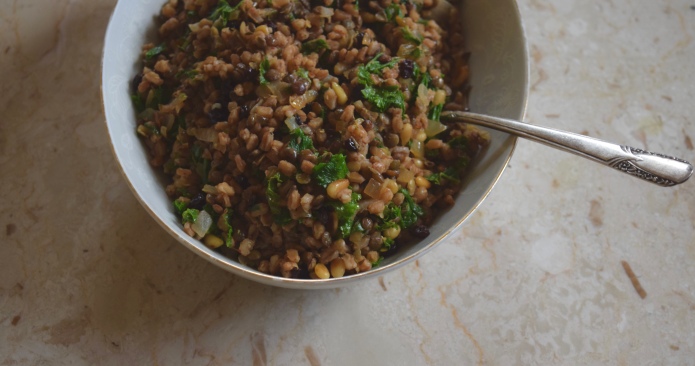
Farro and Lentil Salad with Currants and Pine Nut Relish
adapted from The A.O.C. Cookbook by Suzanne Goin
This salad is highly adaptable. If you can’t find mustard greens or Aleppo pepper, I would replace them with kale and red pepper flakes, respectively. This salad makes a great light meal. Goin mentioned pairing this with white fish if you’d like a restaurant quality dish, but I found adding a soft boiled egg to the leftovers is a great way to make it more hearty.
Serves 4-6
Salad:
4 tablespoons olive oil, divided
1/2 an onion, diced
2 bay leaves
1 tablespoon finely chopped rosemary leaves
1/2 teaspoon Aleppo pepper
salt and pepper
1 1/2 cup farro
3/4 cup French green lentils
2 big handfuls of mustard greens, chopped
Relish:
1/2 cup pine nuts
1/3 cup dried currants
2 tablespoons olive oil
1/2 an onion, diced
2 tablespoons drained capers in brine
1 small rosemary stalk
1/2 teaspoon Aleppo pepper
1/4 cup sherry vinegear
salt and pepper
In a medium pan over medium heat warm 2 tablespoons of olive oil. Add the onion, the bay leaves, the chopped rosemary, the Aleppo pepper, and a sprinkling of salt and pepper. Cook, stirring often, until the onions have softened and smell incredible, about 8 minutes. Add the farro and lentils, and stir well. Cook, stirring often, for about 3-4 minutes- just long enough so that the farro and lentils start to toast a bit. Add 8 cups of water and a generous pinch of salt. Bring the whole thing to a boil, then reduce to a simmer. Cook until both the farro and lentils are cooked through- about 35 minutes. (I started checking at 20 minutes, then checked every 5 minutes after that.) Drain the farro-lentil mixture, then spread it out on a sheet tray to let it cool and dry. Remove the bay leaves.
While the farro and lentils are cooking, place the pine nuts in a small pan over low heat. Stir often, until the pine nuts start to smell fragrant and take on some color. As soon as they’re golden but not dark, tip the pine nuts into a medium bowl. This will only take a few minutes, so make sure to give the pine nuts your undivided attention- they will burn quickly. Add the dried currants to the same bowl.
In a sauté pan, warm 2 tablespoons of oil over medium heat. Add the onion, the rosemary stalk, the capers, Aleppo pepper, and a pinch each of salt and pepper. Cook, stirring often, until the onions are just starting to color. Add in the sherry vinegar, and immediately turn off the heat- you just want to warm the sherry vinegar through. Pour the whole mixture onto the pine nuts and currents. Remove the rosemary stalk. Let it all sit and infuse together while the farro and lentils cook.
Once everything is ready, warm the last 2 tablespoons of oil over medium-high heat in a large sauté pan. It can be the same one that you cooked the onions and capers in. Add the farro-lentil mixture, and stir with a wooden spoon. You want to stir often enough that you can scrape up the brown bits on the bottom before they burn, but not so often that the farro and lentils can’t crisp up. Once everything is warmed through and crisped (this took me about 5 minutes), add in the mustard greens. Stir them to combine well, and let them wilt down. Once they’ve wilted down, add the pine nut-current-onion mixture and stir well. Taste, and adjust seasonings as necessary.
This is one of those rare dishes that’s as good warm as it is at room temperature. And it’s even better after it’s sat a bit, and allowed all the flavors to mingle.
